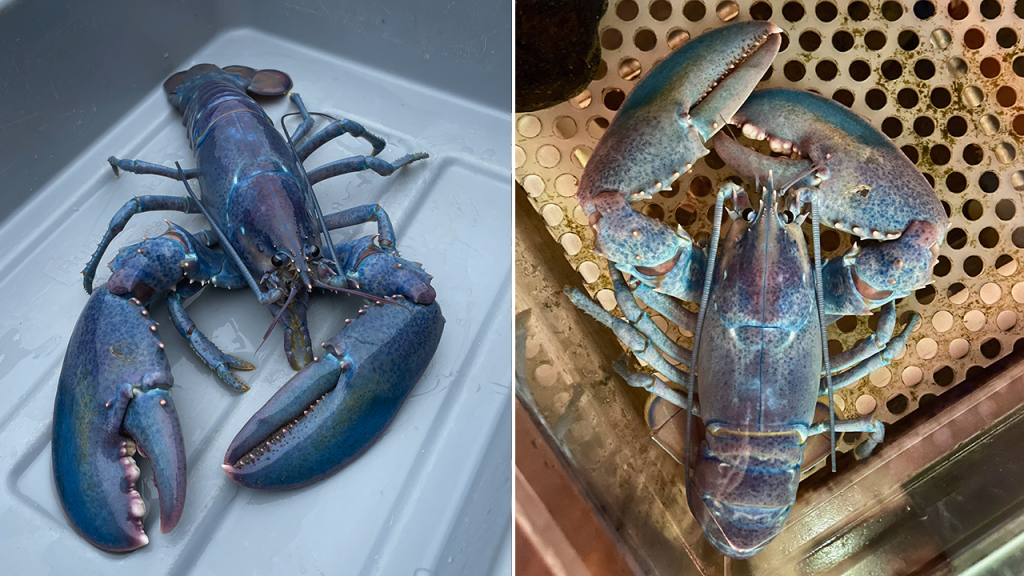A rare cotton candy lobster, with its stunning pink and blue shell, was caught off the coast of New Hampshire and Maine by the Atlantic Lobster Company. This unique lobster has now found a new home at the Seacoast Science Center in Rye, New Hampshire, joining two other lobsters that share similar eye-catching colors. According to a representative from the science center, cotton candy lobsters are extremely rare, with only one in 100 million lobsters displaying this color combination. Lobsters come in various colors, including orange, yellow, red, blue, and the distinct cotton candy coloration, which features pinks and purples on a blue background, resembling the popular carnival treat.
The Seacoast Science Center is a nonprofit organization dedicated to marine science education and conservation. Their mission is to spark curiosity, enhance understanding, and inspire the conservation of the marine environment. Lobsters, commonly found on the east coast of North America, can display a range of color variations, including split lobsters with different colors on each side, calico lobsters with black and orange patterns, and the rare cotton candy lobsters. Regardless of their initial color, all lobsters turn red when they are cooked in hot water, as noted by the National Oceanic and Atmospheric Administration (NOAA).
Two orange-colored lobsters were recently delivered to Red Lobster restaurants in North Carolina and Colorado. Both lobsters were safely transported to local aquariums, where they will be cared for. Orange lobsters get their unique color from the pigments they ingest in their diet, according to Jared Durrett, director of husbandry at Ripley’s Aquarium of the Smokies in Tennessee. These orange-colored lobsters are even rarer than cotton candy lobsters, with only one in 30 million lobsters displaying this particular coloration. Lobsters are fascinating creatures with a wide range of colors, making each one a unique specimen to observe and study.
The discovery of the cotton candy lobster and the recent delivery of two orange lobsters to Red Lobster restaurants have sparked interest and excitement among marine enthusiasts and lobster lovers. The Atlantic Lobster Company, the organization responsible for catching the cotton candy lobster, has not provided additional comments about this remarkable find. The Seacoast Science Center continues to educate the public about marine life and conservation efforts, showcasing rare lobsters like the cotton candy lobster to inspire curiosity and appreciation for the diverse marine ecosystem.
The National Oceanic and Atmospheric Administration has noted that lobsters can exhibit a range of color variations, from traditional red lobsters to unique color combinations like those seen in the cotton candy lobster. Split lobsters, calico lobsters, and other rare colorations add to the intrigue and diversity of these fascinating creatures. With lobsters found along the east coast of North America, from Newfoundland to North Carolina, researchers and enthusiasts have ample opportunities to study and observe these captivating marine animals in their natural habitats.
Overall, the discovery of rare lobsters like the cotton candy lobster, as well as the recent influx of orange lobsters in North Carolina and Colorado, highlights the incredible diversity and beauty of marine life. These unique color variations add to the allure of lobsters and inspire conservation efforts to protect these important species. Organizations like the Seacoast Science Center play a crucial role in educating the public about marine science and promoting awareness of the need to preserve marine ecosystems for future generations. With ongoing research and conservation efforts, we can continue to learn more about these fascinating creatures and work towards their preservation.


